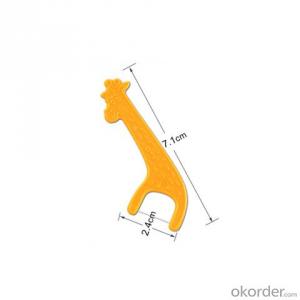Plastic water pipes and fittings have become an integral part of modern plumbing systems. They are known for their durability, ease of installation, and cost-effectiveness. In this guide, we will explore the world of plastic water pipes and fittings, providing you with all the information you need to make an informed decision for your plumbing projects.
The Evolution of Plumbing Materials
Once upon a time, the only option for water pipes was metal – specifically, lead or copper. These materials were heavy, difficult to work with, and prone to corrosion and leakage over time. The introduction of plastic pipes revolutionized the plumbing industry, offering a lightweight, flexible, and corrosion-resistant alternative.
Understanding the Types of Plastic Pipes
There are several types of plastic pipes available in the market, each with its own set of advantages and ideal applications. Let’s dive into the most common types:
– PVC Pipes: Known for their resistance to chemicals and their ability to withstand a wide range of temperatures. They are commonly used for both cold and hot water supply systems.
– PEX Pipes: These pipes are made from cross-linked polyethylene, which makes them incredibly flexible and durable. They are perfect for radiant heating systems and are known for their resistance to freezing.
– CPVC Pipes: Chlorinated polyvinyl chloride pipes are an upgrade from PVC, offering higher heat resistance and strength. They are ideal for hot water systems and high-temperature applications.
The Role of Fittings in Plumbing
Fittings are the unsung heroes of any plumbing system. They connect pipes, change direction, and adapt to different pipe sizes. Here are some common types of plastic fittings you might come across:
– Elbows: Used to make 90-degree turns in the pipe.
– Tees: Allow for the branching off of a pipe, creating a ‘T’ shape.
– Couplings: Used to connect two pipes of the same diameter.
– Adapters: Necessary for connecting pipes of different materials or diameters.
Benefits of Using Plastic Pipes and Fittings
Plastic pipes and fittings offer a myriad of benefits that have contributed to their widespread use:
– Lightweight: Easier to handle and install compared to their metal counterparts.
– Cost-Effective: Generally cheaper than metal pipes, reducing overall project costs.
– Corrosion-Resistant: Unlike metal, plastic doesn’t rust or corrode, ensuring a longer lifespan.
– Non-Conductive: Plastic pipes do not conduct electricity, adding an extra layer of safety.
– Easy to Install: Most can be connected with simple push-fit or soldering techniques.
Installation Tips and Tricks
When it comes to installing plastic water pipes and fittings, there are a few tips to keep in mind:
– Measure Twice, Cut Once: Always double-check your measurements before cutting the pipe to avoid waste.
– Use the Right Tools: Investing in quality tools will make the installation process smoother and more efficient.
– Follow the Manufacturer’s Guidelines: Each type of plastic pipe and fitting may have specific installation instructions.
– Check for Leaks: After installation, it’s crucial to test the system for any leaks to ensure everything is functioning correctly.
Maintenance and Care
Proper maintenance and care will ensure that your plastic pipes and fittings last for years to come:
– Regular Inspections: Keep an eye out for any signs of wear or damage.
– Avoid Harsh Chemicals: Some chemicals can damage plastic pipes, so it’s best to avoid using them for cleaning purposes.
– Protect from Extreme Temperatures: While plastic pipes are durable, they can still be affected by very high or low temperatures.
The Future of Plastic Pipes and Fittings
As technology advances, so do the materials and methods used in plumbing. Innovations in plastic pipes and fittings are continually being developed to improve their performance, durability, and sustainability.
Conclusion
Plastic water pipes and fittings have come a long way since their inception. They offer a practical, efficient, and cost-effective solution for a wide range of plumbing applications. By understanding the different types, benefits, and proper installation and maintenance techniques, you can make the most of these versatile materials in your projects.

